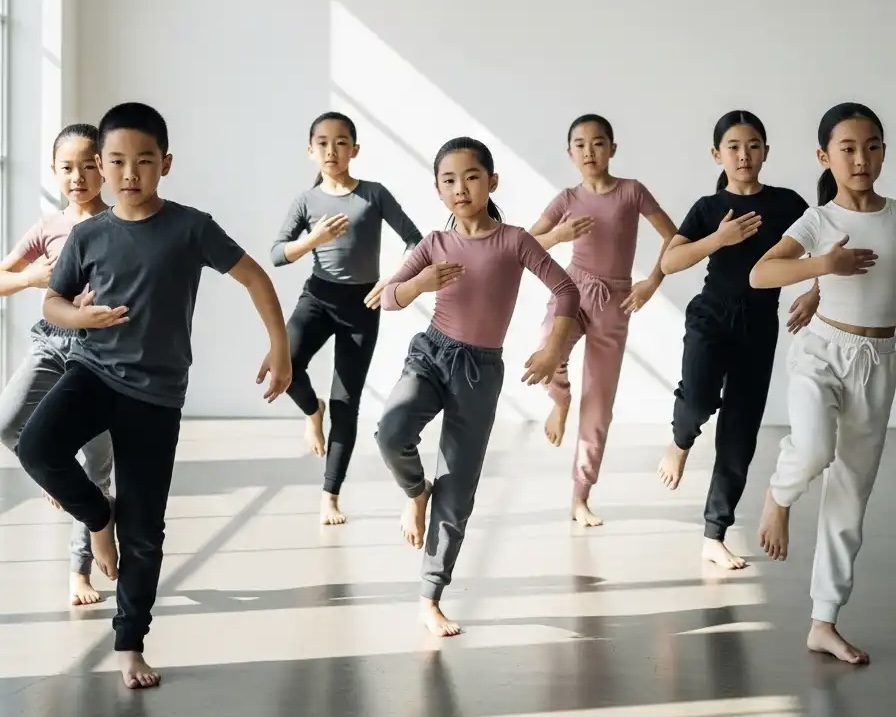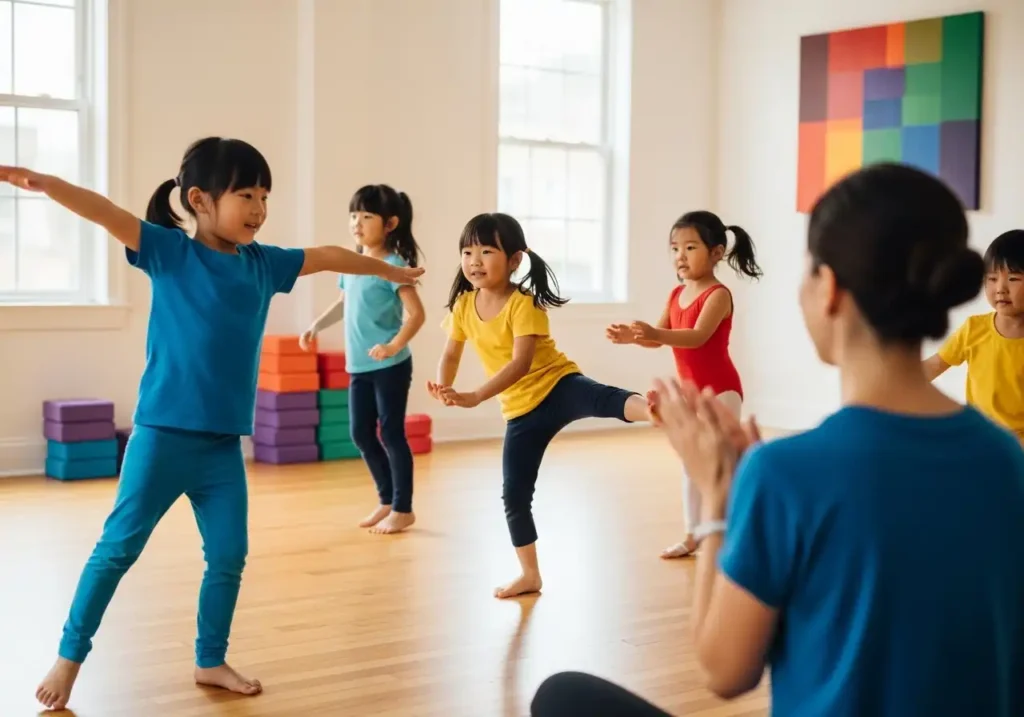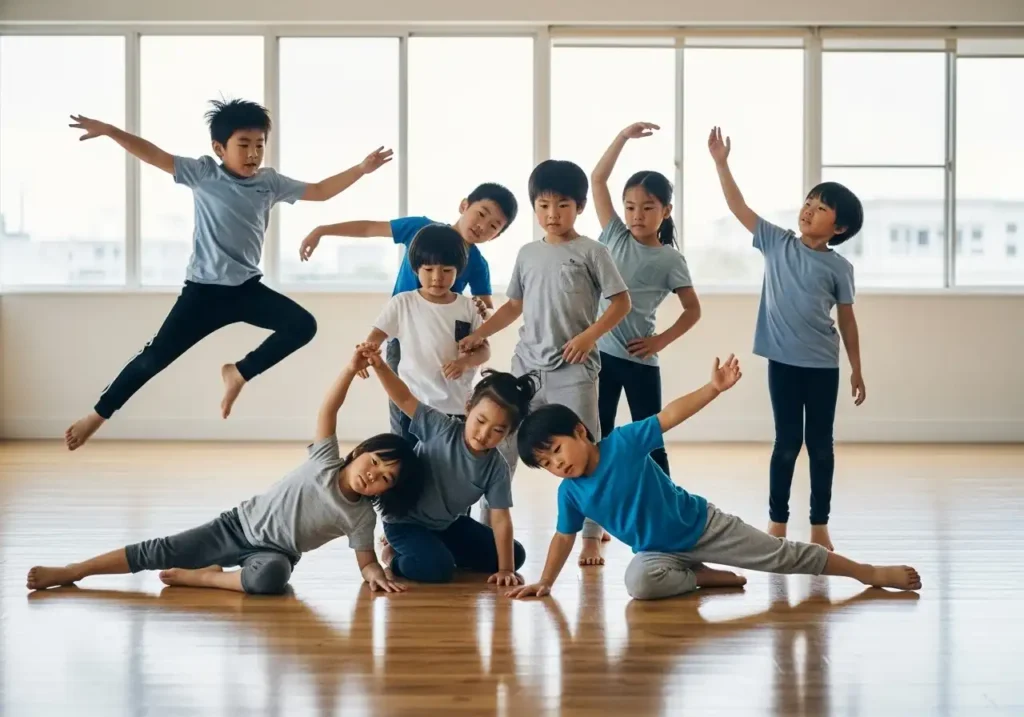
At Tesserae, our Dance Enrichment Programme helps children with developmental needs learn, express, and connect through movement and music. It’s more than dance.
Unlike regular dance classes, our programme is individualised and structured using ABA principles. Drawing on Dr. Dominic’s pioneering research, we integrate the self-instruction procedure into dance routines. This teaches children to guide themselves step by step through choreography, helping them become more independent, confident, and adaptable learners.
Dance offers a wide range of benefits that mirror the positive effects of physical exercise, while also targeting important developmental skills.
Benefits of our enrichment programme include:
Children can join from age 5 and above. The programme is carefully adapted to different age groups and developmental levels. Younger children focus on simple movements, rhythm, and imitation, while older children and adolescents work on more complex choreography, group coordination, and even performance skills.
Because the teaching is individualised, every child can progress at their own pace, regardless of ability level.
Integration of ABA-based self-instruction procedures into dance training expands access to children with developmental needs
Building attention, regulation, social interaction, and independence in a recreational context
Physical exercise with opportunities for creativity, expression, and joy
Lessons are adapted for different ages and abilities, ensuring all children can access dance at the right level of challenge
Our goal is to give children the avenue to express themselves freely through dance, while building confidence, meaningful skills, and connections with their peers.

Driven by his passion to make dance accessible to children with developmental needs, Dr. Dominic decided to dedicate his PhD research to this area. His dissertation explored how ABA-based teaching procedures could be applied to performing arts training, particularly dance, in order to promote both learning and independence.
His research included two key studies.
Study 1: The Effectiveness of the Self-Instruction Procedure on Teaching Dance to Children with ASD
This study examined how children with autism could learn dance routines through self-instruction, a process where the learner talks themselves through each step using visual or verbal cues. This approach reduces the need for physical prompts, giving children more control and ownership over their learning.
Study 2: A Comparison Among the Self-Instruction Procedure, In-Vivo Modelling, and a Combination of Methods in Teaching Dance to Children with ASD
This second study explored how different ABA teaching methods could influence learning outcomes, comparing self-instruction with live modelling and combined approaches.
Both studies produced encouraging results.
Children were able to learn choreographed sequences independently, showing significant improvements in attention, imitation, and confidence. Parents reported that this method felt non-intrusive and respectful, while professionals commended its emphasis on child assent, ensuring that every learner participates willingly and comfortably.
After completing his initial studies, Dr. Dominic collaborated with Sing’theatre, a well-known Singapore theatre company committed to promoting inclusion in the arts. Together, they launched a special pilot initiative for children to apply his research methods in a local context, working directly with neurodiverse children in a dance and theatre setting.
The results were inspiring. The children not only learned dance sequences but also performed in a live showcase organised by Sing’theatre. Parents who attended the performance shared heartfelt feedback about how meaningful the experience was. For many, it was the first time they saw their child perform confidently on stage, smiling, engaging, and enjoying the spotlight.
Parents described the programme as “something beyond the classroom,” an opportunity that sparked new interests and opened the door to leisure and recreation. The success of this collaboration attracted attention from other schools and organisations across Singapore, many of whom have since expressed interest in implementing similar inclusive dance programmes.
At Tesserae, we’ve taken that research and built it into something deeply practical and personal.
Every dance session is:
Structured and evidence-based — guided by ABA techniques that support real learning.
Joyful and expressive — filled with music, rhythm, and creativity.
Individualised — designed around each child’s needs and strengths.
For younger children, sessions emphasise imitation, rhythm, and basic movement coordination. For older children and adolescents, lessons expand into group choreography, performance skills, and creative expression.
Therapists and trained dance instructors work together to ensure that every child feels supported, safe, and encouraged. Whether your child is taking their first steps into rhythm or performing in a group choreography, each success is celebrated.

Parents often tell us that the programme brings out a new side of their child.
They see:
More confidence: their child joins in more eagerly and proudly shows off new moves.
More independence: they follow routines and transitions more smoothly.
More joy: they come home smiling and humming the songs from class.
For some, it’s the first time they’ve seen their child perform on stage. For others, it’s simply watching them move freely, connect with friends, and love the process.
Dr. Dominic’s work represents a growing movement to integrate evidence-based science with the creative power of the performing arts. By showing that dance can be taught effectively through ABA principles, he has opened up new possibilities for how we think about learning, inclusion, and recreation for children with special needs.
The Dance Enrichment Programme at Tesserae is a reflection of this philosophy. It shows that learning can happen anywhere, even in the joy of a dance step, the rhythm of a song, or the laughter shared between friends.